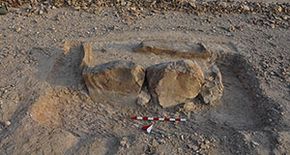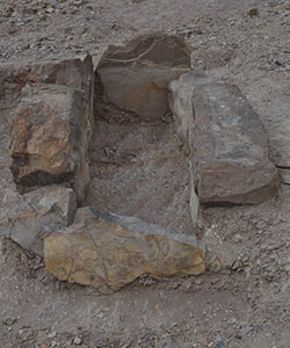
Grave 13 at the beginning of the excavation, after the removal of the topsoil deposit (IMTO archive).

The stone cist tomb Grave 13 at the end of the excavation (IMTO archive).

G13 was built laying large stone blocks directly on the bedrock (IMTO archive).
